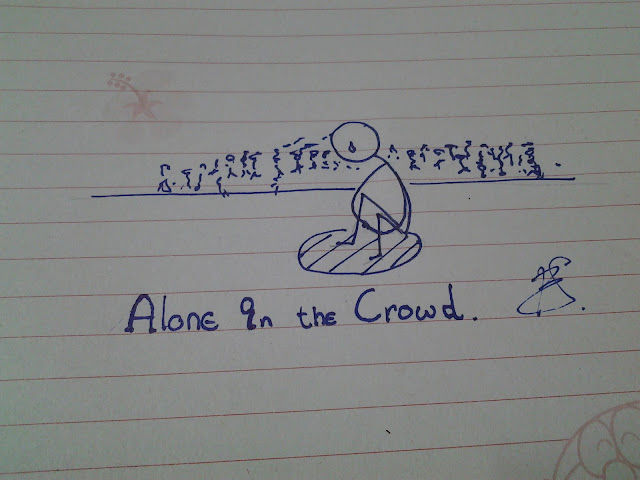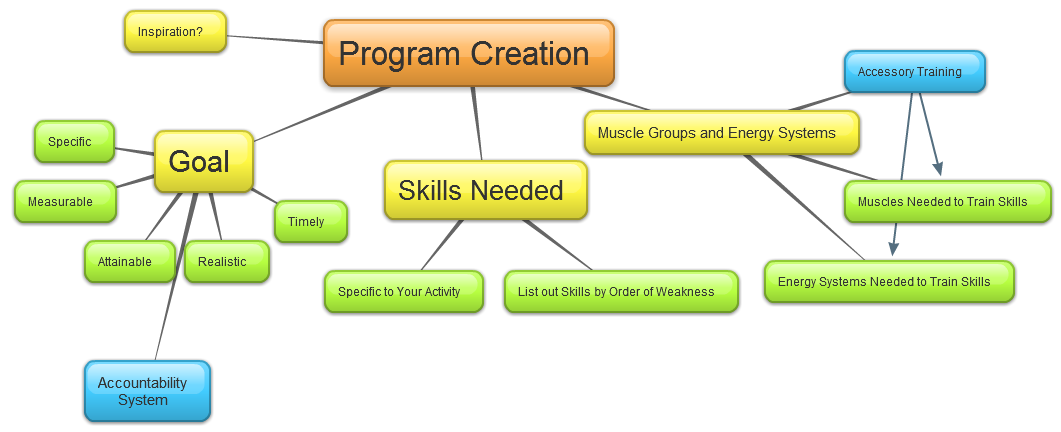In order to print via brother HL 2130 in both side such like print a book would need
this post is firstly aim to used as reminder for me cuz i always mess up with this type of work
i used to write in a post it but tend to always lost it in no time so
but if this gonna be helpful to you, i would appreciate it anyway ^U^
as you see the printed page gonna be firstly faced down so after you finished number 5, the result gonna be ODD pages face down run from first to last and EVEN pages gonna be faced up run from second to the last even pages. That's how to check if it's work or not.
A Dose to your brain
วันพุธที่ 22 พฤษภาคม พ.ศ. 2556
วันอังคารที่ 19 มีนาคม พ.ศ. 2556
Another way to take your whey
Protein supplement, whey protein powder, is usually taken by blend it with an amount of water, either room temperature or colder - chilled water, shake it then drink it as, kind of, beverage.
well, yeah, there are several purposes of using whey, make it easier to take protein sufficiently, supple an protein that is fast to absorb, etc.
But once I "drink" whey for a long time, even with nice taste. I get bored of it, get tired of cleaning shaker. So I decided to prepare my whey, with more creative.
A bu(e)tter whey
Ingredient:
1 scoops of Whey powder, any brand and favor seems fine - I've only try for MGN and ONz with chocolate favor.
an amount of cold water
Dry tea spoon - doesn't limited to teaspoon, any blending tool would be ok
3. After the water you just added blend well, "gradually" pour another "a little water" into the bowl while keep on mixing them nice and smooth, continuously.
Example way to take it
you can eat it instantly after you've finished mixing. But if you want to take it another way, I'll show you one way to use it.
My mom just happen to bought a few bread so I use it just like "condensed milk" or "peanut butter", by coating it around the bread so KABOOM!!! the most exciting steps, put the bread into your mouth!
an amount of cold water
Tool:
Dry bowlDry tea spoon - doesn't limited to teaspoon, any blending tool would be ok
Fig. 1 ingredients and tools
Instruction:
1. Put whey powder into the bowl, completely dry bowl, and then use your teaspoon to create a hole deep down at the center of pile of whey powder as show in fig. 2. The same technique when you cook some bakery.
Fig. 2 dig a hole in the middle
2. Add a little water into the hole so it should resemble of puddle as fig. 3(a) then use your teaspoon to "gradually" mix it together as show in fig. 3(b).
(a)
(b)
Fig. 3 (a)make a puddle by pour a little water into the hole and (b)gradually mix them together
(a)
(b)
Fig. 4 (a)pour a little more water while (b)continuously mix them together
4. After whey and water are blended together well and become sticky like a peanut butter, Congrats!! finished!
Fig. 5 Sticky like a peanut butter
Example way to take it
you can eat it instantly after you've finished mixing. But if you want to take it another way, I'll show you one way to use it.
My mom just happen to bought a few bread so I use it just like "condensed milk" or "peanut butter", by coating it around the bread so KABOOM!!! the most exciting steps, put the bread into your mouth!
Fig. 6 ready to eat!
please credit me in case of sharing this idea,
mujiyd, bluehawk
19-3-2013
วันศุกร์ที่ 15 มีนาคม พ.ศ. 2556
A few of my dark comics
15/3/2013-2556
The first one is what i'm suffering at a time
The second one is what i suffer every day =_=
วันจันทร์ที่ 25 กุมภาพันธ์ พ.ศ. 2556
Idea of what is 4D object gonna be
4-D object !?
To talk about 4-Dimension object, first we need to explain an idea about how 2D and 3D object were made from 1D and 2D respectively. To make it clear here, this article has nothing to do with "what's scientific evidence to this?" and whatsoever like that, this article is just like a discussion,OK?
From about 2 years ago, I once watch this Vid on youtube
About 2 days ago, I recalled of this idea and started to think about it again.
As an assumption that 1-D object is an object that can be made by connect any particle existed in one 0-D object to itself but on a different point on 1-D axis
Making of 1-D
Simply said that what you need to make a 1-D object is 2 0-D objects (It isn't necessary to be identical but being pairs make it easier) putting on a different location within 1-D axis.
Fig 1 The making of 1-D object
Once we put 2 Dots (0-D object, no size, only position) on different position on 1-D axis and connect them together. YUREKA!!!! we got 1-D object! (Length)
Fig 2 1-D object
In the same way for making of 2-D and 3-D as you can see in the video above.
Making of 2-D
According to the making 1-D, what you need is 2 of 0-D objects and 1-D axis so by the same way, what you need to make the 2-D object is 2 of 1-D object and 2-D plane
Fig 3 2-D object
Once we put 2 Lines (1-D object, only length) on different position on 2-D plane and connect every infinitesimal length of them together. YUREKA AGAIN!!!! we got 2-D object! (area)
Making of 3-D
Once again, what you need to make the 3-D object is 2 of 2-D object and 3-D space
Fig 4 3-D object
So 4-D ??
As from 1-D, 2-D, 3-D, you can see that by connected every infinitesimal unit of the lower rank between 2 lower rank object on 2 different position in upper rank space would create the upper rank object. So what do we have to consider is "What the Hell is gonna be the 4 Axis which will create the 4-D plane, space or whatsoever it's called.
The 1st idea comes to mind is "Is is time?" this could be very abstract at a present technology. Make it easier, more tangible manner, now watch this Vid from youtube which describe the relation between any dimension.
According to the Vid above, what changes in 4-D can't always be observed within 3-D space (I do mention the word always because sometime we can observe but sometime can not) so then with this correlation between 2 different dimension, the property of the 4-D axis could be very simple, Density.
With 3-D observed, let say Volume, No Volume Change or can be observed when Density is changed.
So first idea is that if there's an object which can vary its density regardless of mass flux, by connecting every infinitesimal volume of..... let say a square brick with lower density to a square Brick with higher density. and Let make the density of every infinitesimal volume change independently, like so we'll got an object with 4-D axis of density results in changing of Mass and Center of Mass regardless of shape and volume
next idea which's more abstract is axis of TIME. I will use the simpler method to make this type of 4-D. Let's imagine that we have a Block of ...... space ....Then on an axis of time, put the same blocks of space on different time.
Fig 5 4-D time varying object
What is it like to our world now is that if process from t1 to t2 is irreversible, we can see the changes in an object which changes regard of time (aging) but can't revise it back.
The next thing is that what happen on an particular infinitesimal volume at t1 it's gonna be able to observe at t2 as well . I would consider 4-D plane, space or whatsoever as "event" since it's object through times
what if there is an superhero who can travel trough times, he may be older but we can't observe him because he isn't there at the same point on time axis like us.
So for 4-D objects, i think that what need to make a 4-D object is that to answer the question "What is the 4-D property, axis, etc. -you name it" Then the property, special property would results from that axis you choose.
However, further discussion on this topic is needed. No conclusion can be drawn out at the present technology of us human
this article is just for myself to memo what i though. not to convince any other to believe my idea, your agreement or disagreement is not my business but any idea which would help us understand 4-D better is acceptable
Bluehawk, Mujiyd
วันอังคารที่ 20 พฤศจิกายน พ.ศ. 2555
strength training และ endurance training
strength training และ endurance training
คำว่า "ฟิตเนส" นั้น เป็นการกล่าวถึงความสามารถทางกายซึ่งประกอบด้วยหลายสิ่งหลายอย่าง เช่น ความทนทานของหัวใจ(cardiovascular endurance) พละกำลัง(strength) พลัง(power) ขนาดของกล้ามเนื้อ ความทนทานของกล้ามเนื้อ และ รูปร่าง(body composition) เป็นต้น ซึ่งการเน้นย้ำส่วนใดส่วนหนึ่ง อาจส่งผลกระทบต่อการพัฒนาการในส่วนอื่น ๆ ได้
ซึ่งสิ่งที่คนทั่วไปมักฝึกกัน คือ การฝึกเพื่อเพิ่มพละกำลัง หรือ strength training และ การฝึกเพื่อเพิ่มความอดทนหรือความทนทาน หรือ endurance training โดยที่ทั้ง 2 รูปแบบนี้ แน่นอนว่า แตกต่างกันที่ จุดประสงค์ของการฝึก หากแต่ว่า ในการฝึกนั้น มันต่างกันอย่างไร จึงทำการอธิบายไว้โดยย่อดังนี้
strength training
การฝึกเพื่อเพิ่มพละกำลัง โดยวิธีการต่างๆ เช่น แรงโน้มถ่วง แรงต้าน สปริง ไฮดรอลิค ฯลฯ เป็นการทำงานแบบไม่ใช้ oxygen หรือ Anaerobic โดยทั่วไปอาจเรียกรวมว่า resistance training[1] คือการฝึกโดยใช้แรงต้าน ภาษาทั่วไป เรียกว่า ยกน้ำหนัก โดยไม่ได้หมายถึง ยกน้ำหนักแบบนักกีฬาโอลิมปิก แต่เป็นการ ยกน้ำหนัก ในท่าทางต่างๆ เพื่อให้เกิดการทำงานของกล้ามเนื้อมัดต่างกันไป โดยทั่วไปจะเห็นได้จากงานวิจัยมากมายถึงการวัดพละกำลังด้วยการวัด สิ่งที่เรียกว่า 1RM (one-Rep MAX) หรือคือ จำนวนน้ำหนักสูงสุดที่สามารถยกได้เป็นจำนวน 1 ครั้ง ในท่าทางที่ถูกต้อง โดยในการวิจัยมักทำการวัด 1RM ก่อน และหลังเพื่อแสดงค่าที่เพิ่มขึ้นเป็น อัตราส่วนร้อยละ บางครั้ง จะวัด 1RM เป็นจำนวนเท่าของน้ำหนักตัวผู้ทดสอบ เพื่อลดความต่างเรื่องของน้ำหนักตัว
ในการฝึกเพื่อเพิ่มพละกำลังนั้น มักเป็นการฝึกโดยใช้แรงต้านที่มาก(80-100% 1RM) จำนวนครั้งที่น้อย(1-5 ครั้ง)[2] และ มีระยะเวลาที่พักค่อนข้างนาน (3-5 นาที) เนื่องจาก จริงอยู่ว่าพละกำลังสัมพันธ์กับขนาดของกล้ามเนื้อ แต่ในความจริงแล้ว ตัวแปลที่ส่งผลต่อพละกำลังเป็นอย่างมากก็คือ ระบบประสาทส่วนกลาง(Central Nervous System, CNS) ซึ่งพัฒนาได้ด้วยการ Overload[3] หรือก็คือการใช้น้ำหนักที่มากขึ้น ให้ร่างกายส่งกระแสประสาทเข้าสู่กล้ามเนื้อให้เกิดการต้านที่มากขึ้น เมื่อกระแสประสาทมากขึ้น ส่งผลให้สามารถส่งผ่านพลังงานและคำสั่งสู่กล้ามเนื้อได้มากขึ้นจึงส่งผลให้มีพละกำลังมากขึ้นด้วย
อย่างไรก็ตาม คำว่า strength training หากเป็นการกล่าวโดยทั่วไป ไม่ได้มีนัย ที่จะเฉพาะเจาะจงแล้ว จะกล่าวถึงการออกกำลังด้วยแรงต้าน หรือที่เรียกว่า weight training เท่านั้น ไม่ได้เน้นย้ำไปถึง ลักษณะการฝึกที่เฉพาะเจาะจง
credit : http://hanksthinktank.com
Endurance Training
การฝึกเพื่อเพิ่มความทนทาน คือการฝึกเพื่อเพิ่มความอดทน คือการคงสภาพการทำงานให้ได้นาน โดยทั้งนี้ทั้งนั้น หากเป็นการกล่าวโดยไม่เฉพาะเจาะจงแล้ว มักหมายถึง ความทนทานของหัวใจ เช่น การวิ่งให้ได้ระยะทางมากๆ การปั่นจักรยานไกลๆ เป็นต้น นั่้นคือหัวใจสามารถแบกรับภาระ ในการออกกำลังกาย ที่ความเข้มข้นปานกลาง ถึงเบา ได้เป็นระยะเวลานานๆ แต่หากมีการเฉพาะเจาะจงว่าเป็นของกล้ามเนื้อ ก็คือกล้ามเนื้อมัดนั้นๆ สามารถทำงานได้หลายๆ ครั้ง เป็นระยะเวลานานๆ [2] การฝึกเพื่อเพิ่มความทนทานนั้นมีมากมายหลายแบบ รวมไปถึงมีการแบ่งย่อยไปอีกมากมาย เพื่อเป็นการไม่ยืดเยื้อ จึงไม่ขอกล่าวรายระเอียดอื่นๆ ขอสรุปแค่เพียงว่า โดยทั่วไปแล้ว การกล่าวถึง endurance training นั้น มักหมายถึง การฝึกฝนความอดทน ความทนทาน ในลักษณะของการใช้พลังงานแบบ Aerobic[4] เช่น การวิ่ง การปั่นจักรยาน การเต้นประกอบเพลง เป็นต้น
credit : http://www.zonkbonk.com
การรบกวนกันระหว่าง strength training และ endurance training
คนทั่วไปมักจะมีรูปแบบการออกกำลังกายที่แตกต่างกัน บ้างก็ทั้งวิ่งและยกน้ำหนัก บ้างก็วิ่งอย่างเดียว หรือ ยกน้ำหนักอย่างเดียว ซึ่งผลที่ได้จากการฝึกนั้นก็ย่อมแตกต่างกันไป ตามแต่ละรูปแบบ
ผลการศึกษาจาก มหาวิทยาลัยเทมปา[5] โดยทำการรวบรวมงานวิจัยที่ศึกษาเกี่ยวกับการรบกวนกันระหว่าง การฝึกเพื่อเพิ่มพละกำลัง(strength training) และ การฝึกเพื่อเพิ่มความทนทาน(endurance training) จำนวน 21 งาน นำมาวิเคราะห์ภาพรวม พบว่า
- เมื่อเปรียบเทียบระหว่างการวิ่ง กับการปั่นจักรยานแล้ว พบว่า การวิ่ง ส่งผลรบกวนต่อระดับพละกำลังที่เพิ่มขึ้น(strength gain) มากกว่าการปั่นจักรยาน
- เมื่อให้ นักกีฬา ฝึกวิ่ง(ความเข้มข้นปานกลาง) ร่วมกับการฝึกแบบ resistance training พบว่า ระดับพละกำลังที่เพิ่มขึ้น มีค่าน้อยกว่า กรณีฝึก resistance training อย่างเดียว ถึง 50%
- เมื่อฝึกร่วมกันระหว่าง การวิ่ง และ resistance training พบว่า สามารถลดระดับ ไขมันในร่างกายลงได้มากที่สุด
- ผลกระทบต่อพละกำลังที่เพิ่มขึ้น จากการวิ่ง นั้นสัมพันธ์กันกับปริมาณ โดยยิ่งวิ่งได้ระยะทางมากเท่าไร พละกำลังที่เพิ่มขึ้น ยิ่งน้อยลงเท่านั้น
สรุปว่าในการฝึกนั้น ผู้ฝึกควรจะต้องออกแบบการฝึกให้สัมพันธ์กับเป้าหมายของตนว่า ต้องการจะเพิ่มอะไร ในสัดส่วนเท่าไร เช่น หากต้องการเน้นพละกำลังเท่านั้น ก็ควรจะแยกวันกันระหว่างการฝึกแบบ resistance และ การฝึกแบบ endurance หรือหากต้องการจัดแบ่งสัดส่วนก็ ควรศึกษาหาข้อมูล และทำการออกแบบโปรแกรมการฝึกให้ตอบสนองต่อเป้าหมายของแต่ละคน
credit : http://www.endofthreefitness.com
reference
[1]http://en.wikipedia.org/wiki/Strength_training
[2]http://www.brianmac.co.uk/weight.htm
[3]http://www.bodybuilding.com/fun/you-are-what-you-lift.htm
[4]http://en.wikipedia.org/wiki/Endurance_training
[5]muscular development, November 2012
สมัครสมาชิก:
ความคิดเห็น (Atom)


















